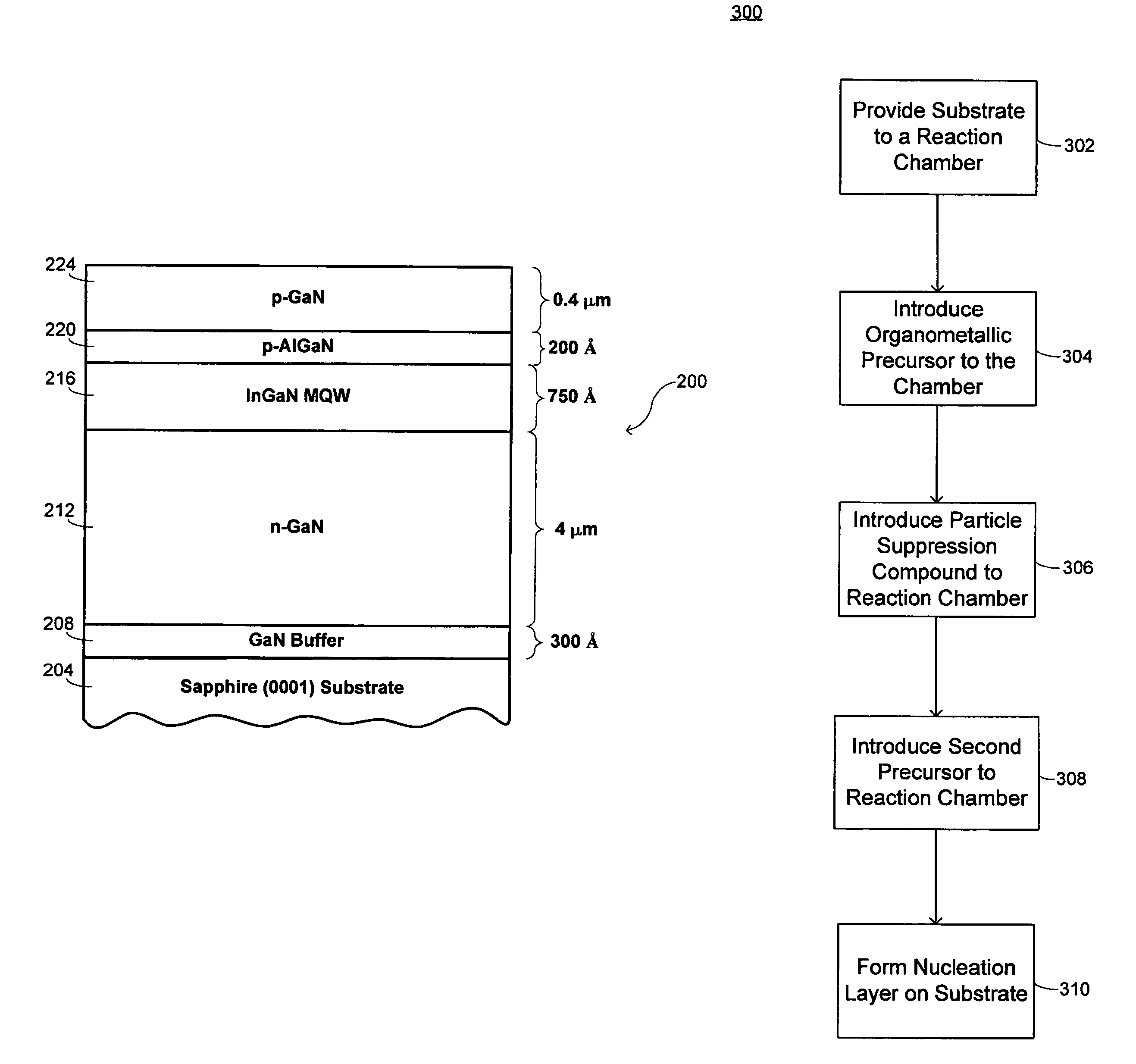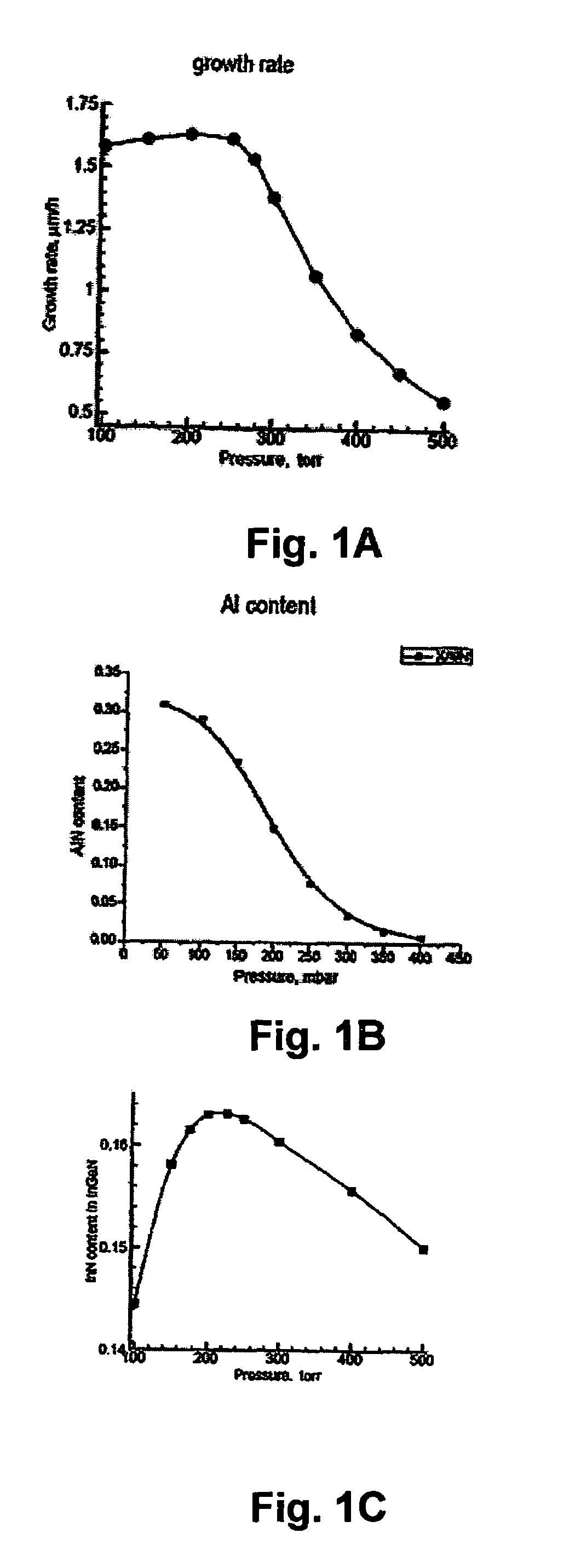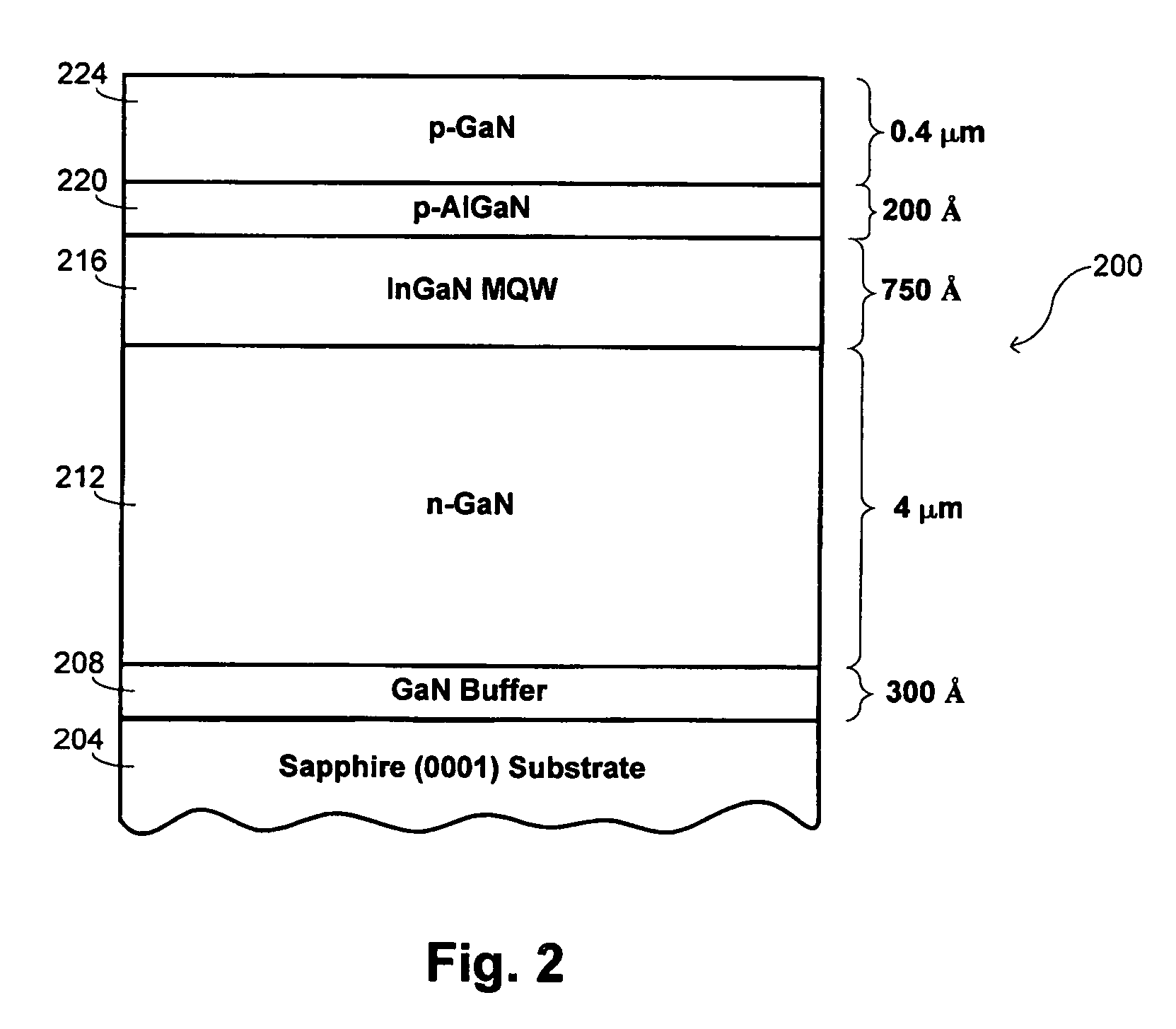Parasitic particle suppression in growth of III-V nitride films using MOCVD and HVPE
a technology of iiiv nitride and hvpe, which is applied in the direction of polycrystalline material growth, crystal growth process, chemically reactive gas growth, etc., can solve the problems of gan film deposition process, anti-etch layer formation, and additional cost and time of hvp
- Summary
- Abstract
- Description
- Claims
- Application Information
AI Technical Summary
Problems solved by technology
Method used
Image
Examples
Embodiment Construction
[0036]Systems and methods to suppress the formation of parasitic particles during the deposition of a III-V layer with metal-organic chemical vapor deposition (MOCVD) are described. A particle suppression compound such as a hydrogen halide (e.g., HCl) may be introduced with a Group III metal-organic precursor (e.g., an alkyl gallium precursor) and / or a Group V precursor (e.g., ammonia) to suppress the formation of parasitic III-V particles in the space above a substrate. The partial pressure of the particle suppression compound (or compounds) may be less than the partial pressures of either the Group III or Group V precursors during the deposition of the III-V layer.
[0037]The particle suppression compounds allow the Group III and Group V precursors to be supplied to the reaction chamber at higher partial pressures than would otherwise be possible for growing high quality III-V films with MOCVD. The ability to increase the partial pressures of the film forming precursors without also...
PUM
| Property | Measurement | Unit |
|---|---|---|
| temperature | aaaaa | aaaaa |
| temperature | aaaaa | aaaaa |
| thickness | aaaaa | aaaaa |
Abstract
Description
Claims
Application Information
 Login to View More
Login to View More - R&D
- Intellectual Property
- Life Sciences
- Materials
- Tech Scout
- Unparalleled Data Quality
- Higher Quality Content
- 60% Fewer Hallucinations
Browse by: Latest US Patents, China's latest patents, Technical Efficacy Thesaurus, Application Domain, Technology Topic, Popular Technical Reports.
© 2025 PatSnap. All rights reserved.Legal|Privacy policy|Modern Slavery Act Transparency Statement|Sitemap|About US| Contact US: help@patsnap.com



